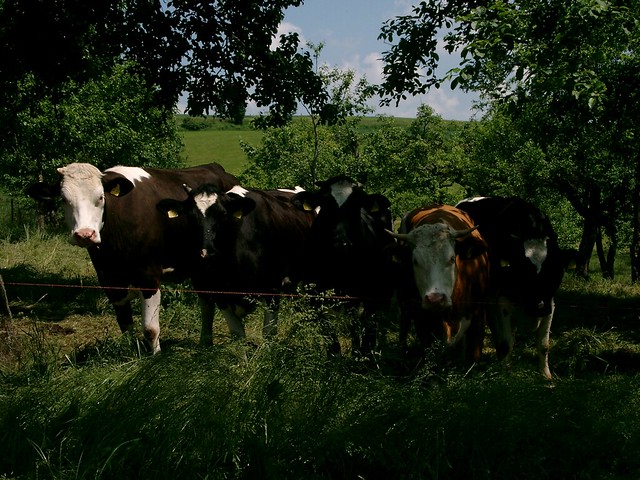by Sebastian Olényi
 |
| Photo by Dana Radloff, www.jugendfotos.de, CC-License(by-nc-nd) |
Professor Mark Post of the university of Eindhoven, one of the leading scientists involved in a research consortium on the topic is optimistic that he will be able to produce the first test-tube burger still in 2012. According to him, it will look and taste identical to a regular burger, only that its production will have been still very expensive: 250,000 Euros will the prototype cost.
Speaking at the NextNature conference in Amsterdam, he outlined that the reasons for changing the meat production radically: With the growing meat consumption of an increasing and an increasingly rich world population, the environmental burden to grow more and more animals is not a sustainable solution. According to the WHO, meat consumption will double by 2050. However, especially cows, but also all other animals are inefficient in their usage of feed – only 15% of what they eat is converted into muscle- or fat cells. At the same time, they produce 18% of the world’s greenhouse gases and use one fourth of all the arable land.
 |
| Photo by Sebastian Olényi, www.jugendfotos.de, CC-License(by-nc-nd) |
Other reasons to switch to In Vitro meat production are the avoidance of both animal welfare problems and the overusage of antibiotics in raising animals. This overusage contributes to the emergence of so-called antibiotic-resistant superbugs threatening human lifes. In vitro meat however would avoid those issues, using its feed 3times as effective, needing only 60% of the energy, producing 90% less greenhouse gases and reducing the risk of contamination of the meat with infectious organisms living on or near the animals. Depending on the way of production, the final product could even be made healthier than regular meat as the fat- and protein content can be clearly defined.
The production principle is relying on animal stem cells which are transformed into muscle and fat cells, but could also develop into other, for example bone or marrow cells. Fed with proteins, fat and sugars, they have to be trained for example with electrical stimulation to develop into real muscle cells. Today, the cells are still grown on a lab scale, but other scientists are already working on scaling up the production with bioreactors, similar to the ones which are used today to produce pharmaceuticals. In the future, they could potentially even grow on algae as feedstock, making their production potentially even more sustainable.
Key challenges for the scientists are especially the upscale and efficiency of the production, but also ensuring consumer acceptance and that taste and texture are similar to the meat we all know. But if those challenges can be overcome – and everything looks like it now – we could even have shark or dolphin meat in the future without a bad conscience.

No comments:
Post a Comment